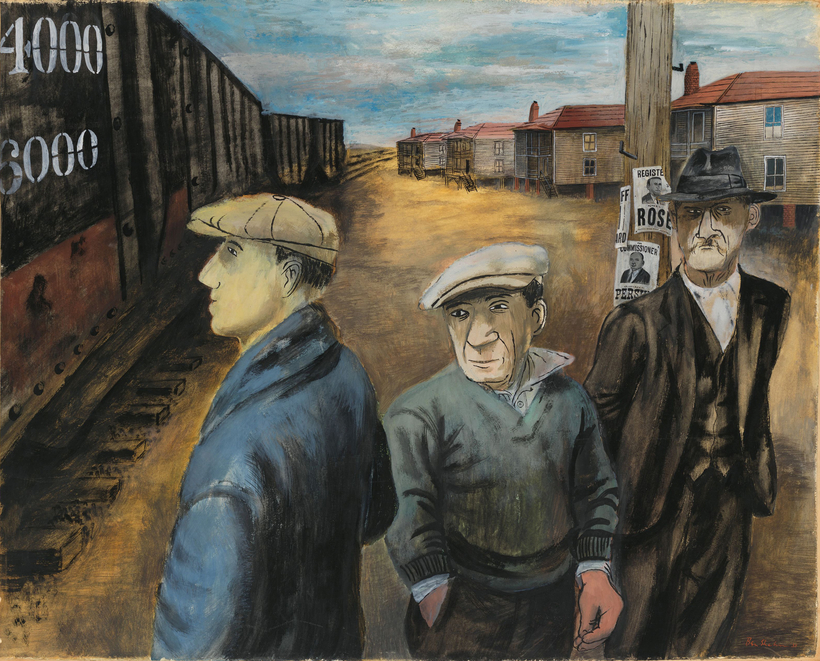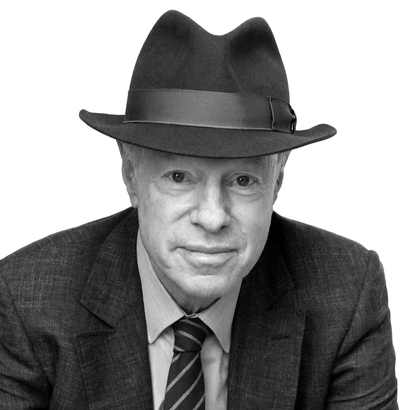Ben Shahn would have been delighted to see his work in the museum that houses Picasso’s Guernica. Shahn’s goal, after all, was to use art to protest cruelty and to make injustice visible. Presenting inhumanity in a contemporary style that draws us in, Shahn employed color and line to summon the viewer’s full attention. It was an unusual ability—to excite us optically while at the same time distressing us emotionally—but, like Picasso’s, Shahn’s heart was awake to the harsh realities of life. The exhibition “Ben Shahn: On Nonconformity,” at the Reina Sofía Museum, in Madrid, is a jolt that’s both exhilarating and distressing.

When New York’s Museum of Modern Art first opened its doors, in November 1929, one of the myths it sought to dispel was that for art to be good it had to be European, and it had to carry forward the tradition of formally organized paintings in the mode of the School of Paris. To buck the trend, one of its earliest exhibitions, in the spring of 1930, was a show of work called “46 Painters and Sculptors Under 35 Years of Age.” Almost all the artists were American, and the best-known painter among them was Ben Shahn, with Isamu Noguchi the most widely recognized sculptor.

That exhibition helped change the constituency of the Modern (which is how it was referred to before the era of “MoMA.”) A columnist in The New York Evening Post wrote, “No little part of the attractiveness of the Museum of Modern Art is the fact that it does not draw merely the cognoscenti. It is the most thoroughly alive museum in New York. Nobody goes out of a sense of duty. The crowd is an omnium gatherum. There you may see of a late afternoon such magnificos as the younger John D. Rockefeller. There you will also see Mrs. Schlitz from Washington Heights.”
It was work by artists such as Ben Shahn, born to a Lithuanian Jewish family in 1898, that made both the “Mrs. Schlitzes” and the sophisticated aficionados of modernism feel so welcome. In 1930, Shahn had not yet painted his series depicting the execution of Nicola Sacco and Bartolomeo Vanzetti—deeply moving—or started his work as a photographer, but he was already creating imagery that, as the organizers of the Reina Sofía exhibition word it, “explores issues such as unemployment, discrimination, totalitarianism, militarism, and threats to freedom of expression.”

“On Nonconformity,” which takes its title from one of the six lectures Shahn gave at Harvard University, demonstrates the success with which his arresting and well-constructed pictures show “that nonconformity is an indispensable precondition not just for significant artistic production but for all great social change.” That lofty goal, cited by Laura Katzman, the exhibition curator, is realized in spades in Madrid.

It’s easy to belittle Shahn as being “of an era.” In Woody Allen’s Annie Hall, there’s a dialogue in which Allen’s character, a stand-up comedian, pigeonholes a pretty postgrad who is doing her thesis on “political commitment in 20th-century literature.” He says, “You’re like New York Jewish, left-wing, liberal intellectual, Central Park West, Brandeis University, the socialist summer camps, and the father with the Ben Shahn drawings, right, and the really, y’know, strike-oriented kind of, stop me before I make a complete imbecile of myself.” Her reply is on the money: “I love being reduced to a cultural stereotype.”
One can typecast Shahn as “a liberal social realist,” but he is far better than that. Nonconformity, of course, may not be everybody’s cup of tea, but at the Reina Sofía you can see it in glorious form.
“Ben Shahn: On Nonconformity” is on view at the Reina Sofía Museum, in Madrid, through February 26
Check out AIR MAIL’s Arts Intel Report, our newly revamped research tool for what to do, see, and watch around the world
Nicholas Fox Weber is the executive director of the Josef & Anni Albers Foundation and the author of several books, including Le Corbusier: A Life and Patron Saints: Five Rebels Who Opened America to a New Art, 1928–1943


